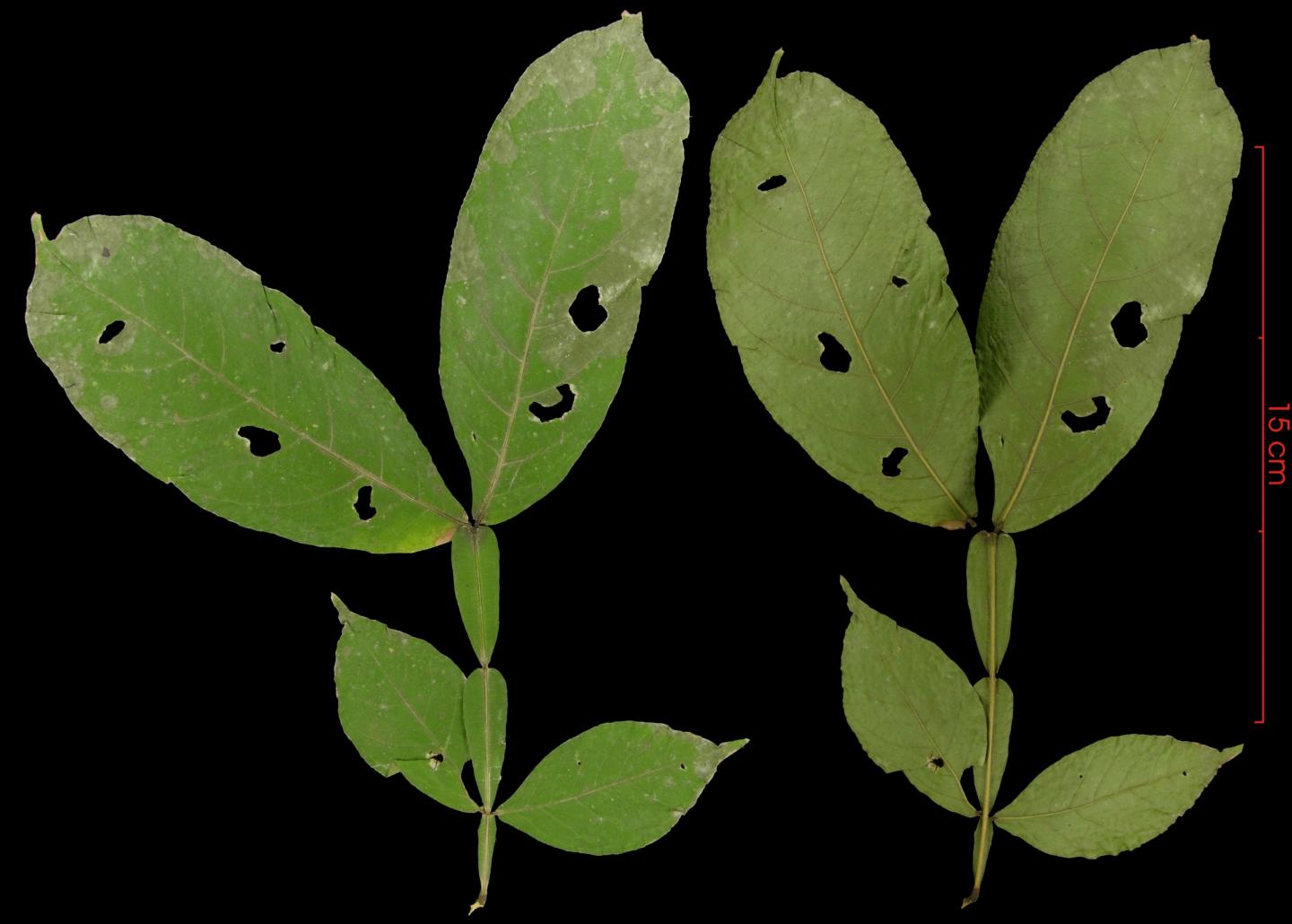
Credit: Steve Paton, Smithsonian Tropical Research
Constant pressure from hungry insects forces plants to innovate: producing new chemicals to protect themselves. This is the newest and best explanation for tropical diversity according to results from a study at the Smithsonian Tropical Research Institute’s Barro Colorado Island Research Station in Panama published March 14 in Science magazine.
Tropical rainforests are home to more tree species than anywhere else on Earth. For example, a rugby field-sized piece (one hectare) of forest in Ecuador contains 655 tree species, more than in the U.S. and Canada combined. Such high diversity puzzled scientists for over 200 years, because, for so many species to be neighbors, they must have slightly different niches–or different ways of making a living. If they were too similar, the most efficient species would eliminate the others. Yet, since all plants need light, water and nutrients, it is hard to imagine that there could be so many unique ways of dividing up these resources.
The authors of the new study propose that, instead, it is the insects eating plants that promote such high diversity. In this evolutionary arms race, hungry insects evade plant chemical defenses, forcing plants to protect their leaves by constantly coming up with new defense chemicals.
“Plants can’t run from their enemies so they evolved a set of strategies to keep from being eaten,” said co-author Phyllis Coley, research associate at the Smithsonian Tropical Research Institute and professor at the University of Utah. “One of the most effective is to produce bad-tasting or toxic chemicals. We discovered that, on average, about 45 percent of the weight of the leaves in our study consists of protective chemicals.”
Plants also defend themselves by unfurling new leaves during seasons when there are fewer insects; they enlist pugnacious ants as body guards or cover their leaves with hairs or spines. Each plant species ends up with a unique set of defenses. This study, supported by the U.S. National Science Foundation, showed that tree-sapling growth was reduced when their neighbors had similar defenses and were eaten by the same insects.
Saplings with defensive traits different from their neighbors’ had a growth and survival advantage. If no single species can dominate the forest, this leads to a forest composed of many different species that were distinct in their defenses and therefore in the insects that attack them.
The team focused their study on nine tree species all belonging to the same group or genus called Inga. Because Inga leaves contain so many chemicals, indigenous people use Inga species to treat everything from headaches to arthritis. Planted with cacao and coffee, Inga edulis trees provide shade and firewood and their long, hard pods contain beans encased in delicious, marshmellow-tasting flesh, which is why its common name is ice cream bean or guava machete.
The team also took advantage of the best-studied piece of tropical real estate in the world in order to understand why nine different species of Inga grow in one place. In the Smithsonian’s ForestGEO plot on Barro Colorado Island, all trees with a stem bigger than a person’s thumb (greater than a centimeter) have been mapped, identified and measured every five years since 1980. In addition to noting all of the ways that these nine Inga species defend themselves, team members collected more than 600 insects actively feeding on the plants.
“Most of the insects we find eating Inga leaves are caterpillars,” said Dale Forrister, doctoral candidate at the University of Utah and first author of the study. “Because no identification keys to the caterpillars of this region exist, we sequenced the DNA of the mitochondrial gene cytochrome oxidase of the more than 600 individual insects we found feeding on the trees. The DNA barcodes tell us that there were 55 different kinds of insects on these nine Inga tree species.”
“Our results suggest that during the sapling stage, an important bottleneck for tropical forest trees, pressure from leaf-feeding insects is a critical driver of negative-density-dependent interactions and, therefore, for the maintenance of tropical diversity,” Forrister said.
###
Co-authors include María-José Endara from the Universidad Tecnológica Indoamérica in Quito, Ecuador, and the University of Utah and Gordon C. Younkin and Thomas A. Kursar at the University of Utah.
The Smithsonian Tropical Research Institute, headquartered in Panama City, Panama, is a unit of the Smithsonian Institution. The Institute furthers the understanding of tropical biodiversity and its importance to human welfare, trains students to conduct research in the tropics and promotes conservation by increasing public awareness of the beauty and importance of tropical ecosystems. Watch our promo video.
Reference: Forrister, D.L., Endara, M.J., Younkin, G.C., Coley, P.D., and Kursar T.A. 2019. Herbivores as drivers of negative density dependence in tropical forest saplings. Science. DOI: 10.1126/science.aau9460
Media Contact
Elisabeth B King
[email protected]
Related Journal Article
http://dx.




